 Few plants can rival the dramatic spring beauty of a wisteria vine in full bloom. Despite the showy flowers and delightful scent, wisteria plants have acquired a reputation for being difficult to grow. Don't be fooled. With the right growing conditions and some occasional pruning, wisteria is a beautiful, fast growing vine - and a worthwhile addition to nearly any garden.
Few plants can rival the dramatic spring beauty of a wisteria vine in full bloom. Despite the showy flowers and delightful scent, wisteria plants have acquired a reputation for being difficult to grow. Don't be fooled. With the right growing conditions and some occasional pruning, wisteria is a beautiful, fast growing vine - and a worthwhile addition to nearly any garden.
Japanese wisteria tends to have more vibrant color blooms and Chinese wisteria a sweeter scent. Both species need a large amount of growing space and look very similar in appearance. You can tell the difference between the two by the way they climb. The stems of Japanese wisteria twine around supports in a clockwise direction, while the stems of Chinese wisteria twine in a counterclockwise direction.
Wisteria will grow in partial shade and marginal soils but performs best in sunny locations (6 or more hours per day) and in moist, fertile soils that drain well. Wisteria needs a large amount of growing space. These plants are vigorous climbers (growing 10 feet or more annually) and are easily capable of climbing to heights of 25 feet.
Once established, the Asian species can become invasive and difficult to get rid of - especially in the east. To help restrain the plant's spreading root system, wisteria can be planted in large containers buried in the ground.
Wisteria needs to be pruned a minimum of twice yearly to keep plants tidy and promote flowering.
You never have to worry about over-building supports for wisteria. Mature vines are heavy and will require ample support. To train young plants to grow on a trellis or arbor, choose an upright stem to serve as the leader and secure this to the support. You can then remove some of the side shoots and train the remaining shoots to grow horizontally across the supports, or simply let them all twine across the supports naturally. Pinch off the main leader when it reaches the desired height.
One of the more frustrating aspects of growing wisteria is waiting for them to reach maturity and then watching them fail to bloom. Here are five common reasons wisteria fail to produce flowers:
Here are the questions asked by community members. Read on to see the answers provided by the ThriftyFun community.
This is a catch all area where I mix my soil. It seldom gets organized. So, forget about the junk. I want to draw your attention to something very interesting in this picture.
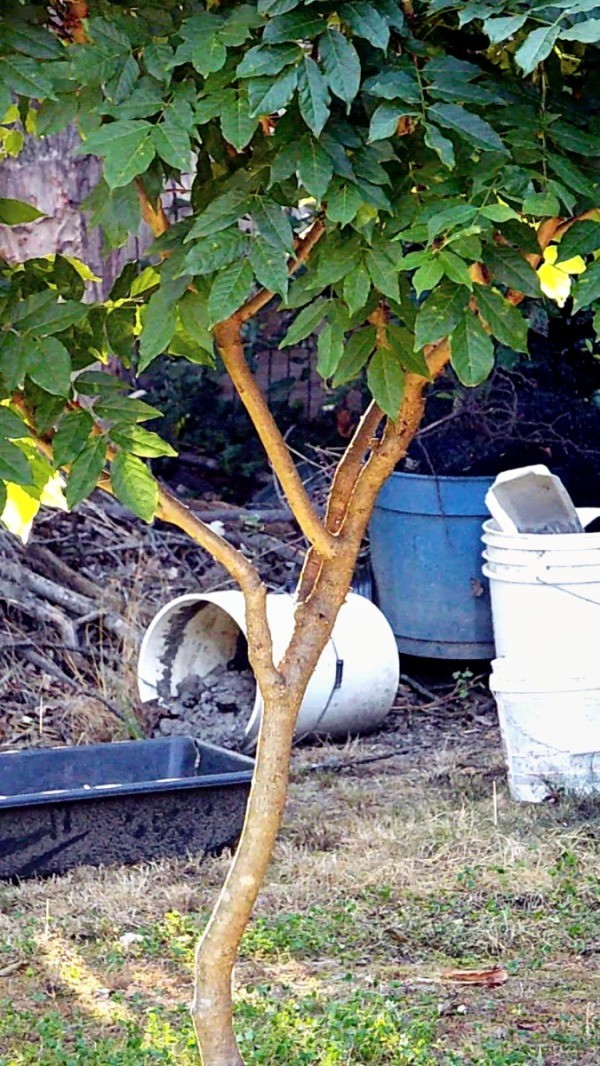
This morning, I noticed something strange going on with this wisteria vine I've trained into a tree. It appeared to be weeping. I watched it for about 5 minutes and decided to get a picture.
I knew I couldn't get a still shot that would be any good, so I got a minute of video and copied a frame from it showing several drops of water(?) in mid air.
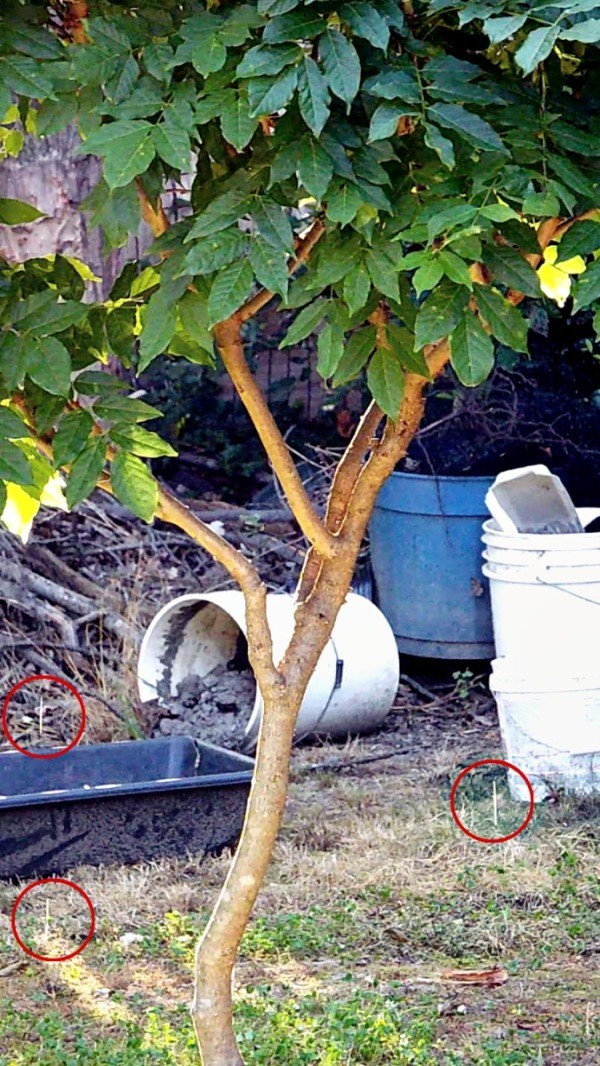
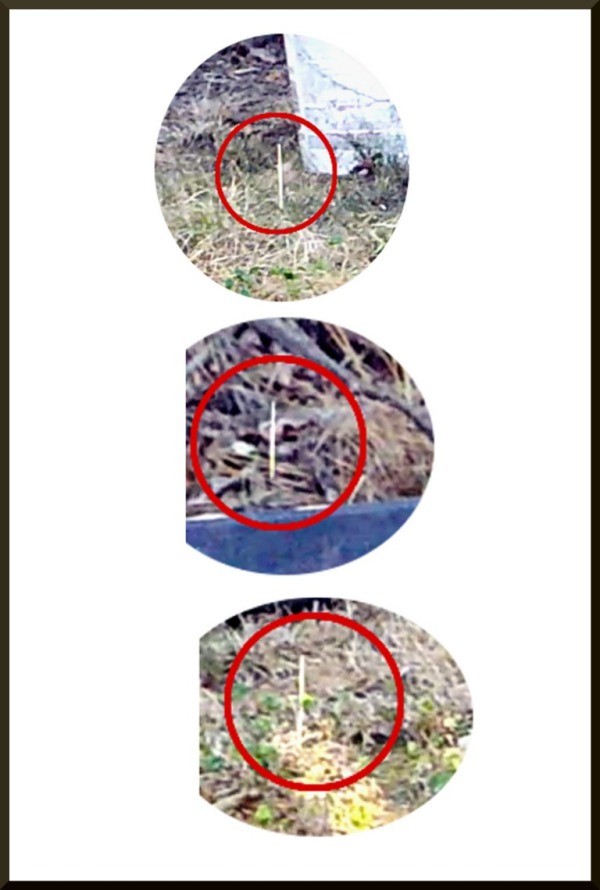
I checked back after writing this post. The sun was higher and the wisteria had stopped 'weeping'. I will check tomorrow at the same time to see if the phenomenon happens, again. Out of curiosity, I will send pictures to my ag agent, hoping he has an explanation.
My question: Has any TF member ever heard of a wisteria 'weeping'? It may be commonplace and something I just missed. My aglaonema (Chinese evergreen) weeps all the time (the droplets just don't drop to the floor).
Well, the party's over. Fun while it lasted. I went out this morning, thoroughly hydrated the tree and placed a black tub under it Ten minutes later, I cut some runners out of the top. I waited. Within 5 minutes the wisteria was dripping.
The drops had no taste or color. They were just like water.
I looked where I made the cuts and saw 'water' oozing out. I believe this 'water' is technically different than sap. I will ask my ag agent about this.
I suppose in another setting, insects large enough to make cuts as large as I made, could accomplish the same effect.
Phooey!
Now, what if I had added purple food coloring to the water I used to hydrate the wisteria. Do you think I could have invited the neighbors over to watch my tree drip 'purple rain'?
Eat your heart out, Michael!
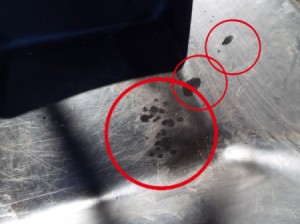
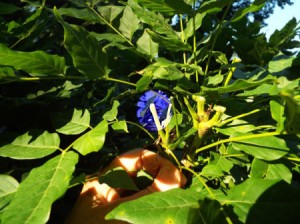
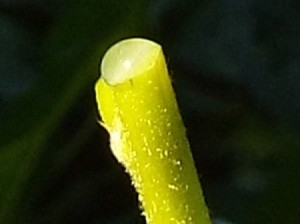
I have a wisteria plant that is at least three years old or so and was told that it could take up to 10 years before it would bloom. Is this true? Right now it is growing on a chain link gate.
Wisterias bloom between 7-15 years old.
How do you plant wisteria with just a dry root?
By db
Not sure what a 'dry root' is, although the words make me think of a piece of the plant that's been removed from the mother plant and then permitted to dry out-not such a good mental image of a plant that can survive, sorry.
However, if I'm am misunderstanding, and you have a viable plant part known as a whip, simply plant it so the root parts are at least 6" under good quality soil.
Then stake, mulch, and water it in well. You can apply a rooting hormone available in most garden centres to encourage root growth, and feed specifically formulated for wisteria at the same time. Keep the soil moist but not soggy the first spring and summer it's in the ground.
And then wait about five years for the whip to become a blooming shrub.
You'll wait about ten years for it to climb as high as a roof or along a fence, and about twenty before the runners become woody and thick enough to pull down said roof or fence:)
Or you can buy a potted wisteria that is already blooming. Transplant it and stand back, although it may not bloom the first season after transplanting.
Wisteria is one of the plants I miss most about the Deep South, crepe myrtle is the other.
Frugalsunnie is correct, "You'll wait about ten years for it to climb as high as a roof or along a fence, and about twenty before the runners become woody and thick enough to pull down said roof or fence:)"
Remember to sink 4x4 or even 6x6 treated posts in the ground with concrete to withhold the weight. DO NOT think you are going to buy one of those store bought vine climbers or trellises for one of these. My wisteria is heavy and the only part of my arbor that is holding up to it are the posts, which are 6x6. I am getting ready to cut the top of this wisteria and rebuild the arbor. I would recommend buying cedar planks (boards) and building your own trellis for a wisteria.
I had been trying to look for wisteria cutting suppliers, but could not get any. If any one can help me out with addresses of suppliers who can supply me few pieces of wisteria cuttings with roots. I am ready to pay for cost and freight
By Mohammad Ismail
Search the Internet for 'Wisteria Plant Liners'. You should find several suppliers. 'Liners' is a term used by nurserymen for small, recently rooted plants in about 4" containers.
Ellen Brown suggests planting the wisteria in the ground in a container in order to limit the aggressive expansion of its root system. My question is: what should the container be made of in order to prevent the roots from breaking out? We are considering building a wisteria walkway with a pergola on the side of our house. Unfortunately the sewing piping runs in the same area and we are worried about the roots invading that system. The manholes are concrete and the sewage lines in between are plastic piping? Thanks for any info.
By Moti Kl
What is a suggested way to stabilize a wisteria plant that is slightly leaning? This plant was started by some shoots about 18 years ago. It is a beautiful plant that has heavy purple clusters of flowers in the spring. It has become overgrown, but is easily trimmed.
By K. Tate
Where can I find wisteria?
By barbiewantstobeme from Munford, AL
You can just plant the seeds that are in the pods. Nick the seeds slightly and soak them overnight before planting them. This is a page about planting wisteria pods.
Wisteria can actually be propagated from both soft and hard wood cuttings, depending on the time of year one works better than the other. This is a page about starting a wisteria from a cutting.
This is a page about wisteria vines not flowering. Wisteria are known for their fragrant, clumps of flowers. If your vines are not producing flowers, here are some tips to increase their blooms.
Growing a vining plant such as wisteria as a standard, means training it to develop a more treelike form. This is a page about growing wisteria as a standard.
Wisteria is a vining, flowering plant member of the legume family. The draping clusters of purple flowers are quite fragrant. It is typically grown as a woody vine, but can also be trained as a standard or small tree. This page contains wisteria photos.